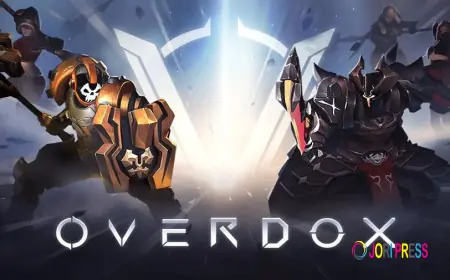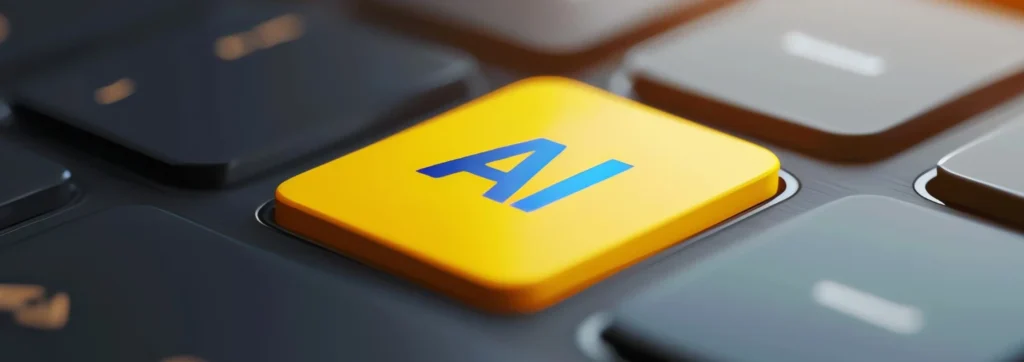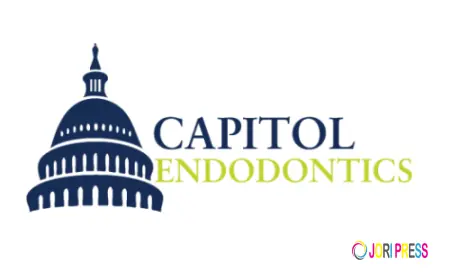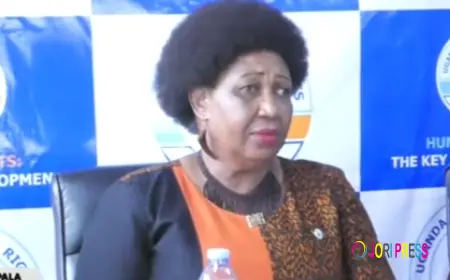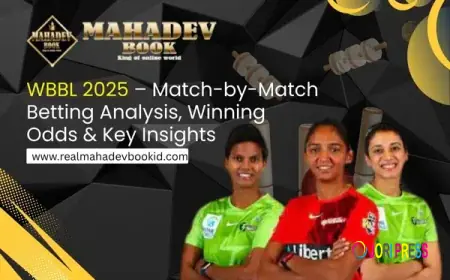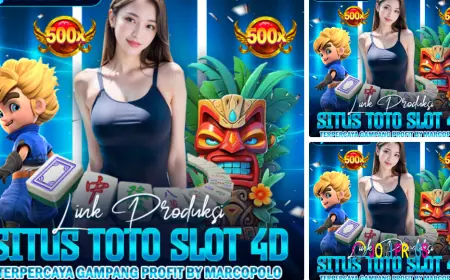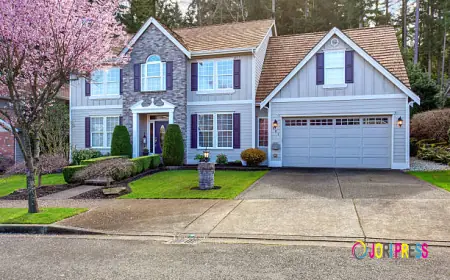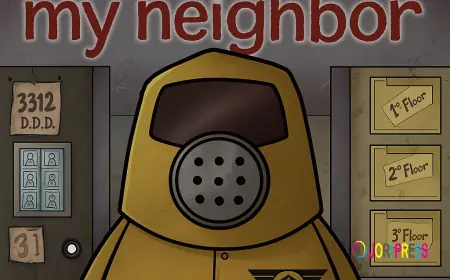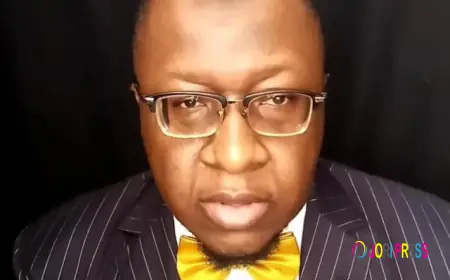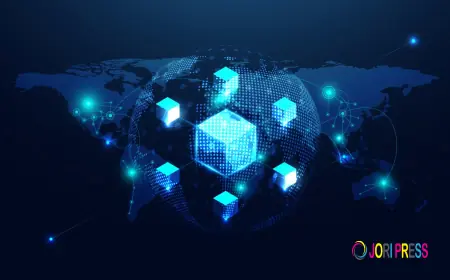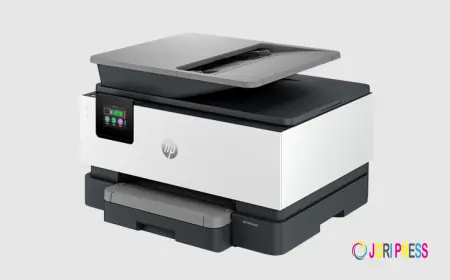Decentralized Governance Tokens: Best Practices to Create a DAO-Driven DeFi Project
Decentralized governance tokens enable transparent, community-driven decisions in DeFi. Learn best practices to build a strong DAO using effective crypto token development.

Decentralized finance continues to expand as new projects enter the market with the goal of removing intermediaries and giving users direct control over financial systems. At the center of these systems are decentralized governance tokens. These tokens give holders the right to vote, propose changes, and guide the direction of a project. As more teams explore crypto token development, the demand for practical guidance on building governance tokens has increased. DAO-driven projects are no longer experimental structures. They are now a core part of the DeFi ecosystem, and projects that prioritize transparent decision-making tend to attract engaged communities and long-term users.
This blog explains how governance tokens operate, why DAOs rely on them, and the best practices teams can follow when building a governance-driven DeFi project. The goal is to present clear and straightforward information without using complex or fancy descriptions. The focus remains on practical insights that teams can use when planning or optimizing a DAO structure.
Understanding the Role of Governance Tokens in DeFi
Governance tokens give users the ability to take part in decision-making. In traditional organizations, decision power is concentrated in upper management. In decentralized projects, token holders are the ones who take part in voting, signaling, and guiding the protocol’s path. The token becomes a tool for collaboration between users, developers, and contributors. This structure makes the project resilient and gives participants a sense of ownership.
In many protocols, governance tokens allow holders to vote on proposals related to interest rate models, liquidity incentives, fee structures, treasury spending, integrations, and smart contract upgrades. They are also used to approve long-term strategic decisions. This approach helps ensure that changes reflect the combined judgment of the community, not a single authority.
Governance tokens also influence economic activity within a protocol. Many mechanisms use token staking or lock-in periods to reduce supply circulation or reward long-term engagement. This creates a feedback loop between active participation and protocol stability. When the governance system is well designed, token holders help protect the sustainability of the platform.
Why DAOs Depend on Governance Tokens
A DAO, or decentralized autonomous organization, requires a system that enables users to coordinate and vote. Governance tokens provide that system. Without them, the project would rely on centralized decision-makers, which defeats the purpose of decentralization.
DAOs rely on governance tokens for several reasons. They give members clear incentives to contribute. The tokens represent a stake in the project’s future, which motivates holders to act responsibly. They allow transparent and traceable voting. Every action takes place on-chain, meaning anyone can verify how decisions were made. DAOs also evolve as the environment changes. Token holders can introduce new rules, adjust reward structures, or modify operational workflows without depending on external authorities.
In recent years, DAOs have spread across sectors like lending, decentralized exchanges, staking networks, and community funds. Despite the differences, all of them use governance tokens to offer accountability and shared responsibility. The success of a DAO depends on the quality of its governance token model.
Key Components of Governance Token Design
Teams exploring crypto token development must understand that governance tokens are not just digital assets. They are part of a larger system. A well-designed governance token includes clear parameters, predictable rules, and a structure that aligns incentives.
Token distribution is one of the first components to define. Teams need to decide how many tokens will circulate, how many are reserved for contributors, how many go to early supporters, and how many will be used for future growth. When distribution is balanced, it prevents small groups from taking full control. Many projects use gradual release models to avoid sudden market shocks.
Voting rights form the second major component. Some projects use a simple one-token-one-vote model, while others implement delegated voting, where holders assign their voting power to active members. There are also quadratic voting methods, where influence increases at a diminishing rate to avoid dominance by large holders. Each model has strengths and weaknesses. The right choice depends on the project’s goals.
Another essential element is proposal creation. DAOs need clear processes for submitting ideas and improvements. Without structure, governance becomes disorganized. Projects often require a minimum token threshold to create a proposal, which reduces spam while still allowing community contributions. A formal workflow usually includes proposal drafts, community discussions, final submissions, and on-chain voting.
Establishing a DAO Framework
A governance token becomes effective only when paired with a functional DAO framework. When designing the framework, teams must consider technical clarity, community inclusiveness, and operational transparency.
A DAO typically begins with a charter that outlines its mission and responsibilities. This document explains the purpose of the project, how decisions occur, and how disputes are handled. It also states the principles the community will follow. Even though DAOs are decentralized, having a foundational structure helps new members understand the system.
Smart contracts form the operational layer. These contracts store governance rules, execute votes, and trigger changes without centralized interference. For example, once a proposal is approved by token holders, the contract can automatically implement the update. Automation lowers the risk of manipulation and ensures consistent processes.
DAOs also require communication tools. Active discussions often take place on public forums or on-chain messaging channels. These tools allow token holders to share ideas, debate proposals, and organize priorities. Community dialogue is essential, since governance depends on collective understanding.
When developing this framework, many teams partner with a token development company that specializes in DAO and DeFi architectures. Such companies help set up governance tools, automate workflows, and ensure smart contracts follow security standards. This support reduces technical errors and helps the DAO operate more efficiently.
Best Practices for Creating an Effective Governance Token
Building a governance system involves careful planning. The following best practices guide teams through the stages of designing, launching, and maintaining governance tokens for DAO-driven DeFi projects.
1. Start With a Clear Utility and Governance Scope
A governance token should not exist without a defined purpose. Before development begins, teams must outline what the token controls. This includes specific voting areas, decision boundaries, and upgrade workflows. When users understand how their tokens influence the protocol, they are more likely to participate. Clear utility also prevents confusion and conflict during major decisions.
2. Design a Balanced Distribution Model
Distribution should be structured so that early supporters, developers, community members, and future contributors receive fair allocations. Oversized allocations for insiders weaken trust. On the other hand, allocating too little to the core team may reduce long-term commitment. Gradual vesting helps prevent sudden sell-offs and maintains alignment between contributors and the project.
3. Provide Transparent Governance Processes
A functional DAO needs transparent rules. Teams must publish guidelines describing how proposals are made, who can create them, how long voting lasts, and what quorum levels are required. These rules should be easy to understand. When governance processes are predictable, the community can hold fair debates and reach decisions more effectively.
4. Avoid Centralization in Voting Power
One of the main risks in DAOs is the concentration of voting power. If a small group controls most tokens, decentralization becomes an illusion. To minimize this risk, projects can explore delegated voting systems or voting caps. Some DAOs use incentive programs to encourage wider distribution and participation. The goal is to prevent any single entity from dominating the system.
5. Implement Security Measures for Smart Contracts
Since governance rules operate through smart contracts, security must be a priority. Teams should test their contracts thoroughly and use automated verification tools. Multi-step proposal execution models can reduce the risk of malicious proposals. Timelocks are also useful because they allow the community to review decisions before they take effect. Working with a token development company experienced in secure contract design can streamline this process.
6. Encourage Participation With Incentive Models
Governance is meaningful only when members participate. DAOs often introduce incentives such as staking rewards, voting rewards, or participation badges. These rewards encourage consistent involvement and prevent voter fatigue. Incentives do not need to be complex. Even simple reward systems help keep the community engaged.
7. Regularly Update Governance Structures
As the protocol grows, governance rules may need adjustments. DAOs should conduct periodic evaluations to identify outdated procedures or gaps in the system. Updates can include adjusting quorum thresholds, improving proposal processes, or implementing new delegation methods. A flexible governance system is more capable of adapting to changes in user behavior or market conditions.
Avoiding Common Challenges in DAO Governance
DAO governance is not always simple. Many projects struggle with low participation, unclear proposals, or conflicting interests. Understanding these challenges helps teams prepare and structure their governance frameworks properly.
Low voter turnout is one of the most common issues. Many participants hold tokens but do not take part in governance. This weakens decentralization and may allow small groups to control decisions. To address this, projects can simplify proposals, offer participation incentives, and create educational content explaining governance benefits.
Another challenge is the lack of proposal clarity. Poorly written proposals can confuse voters and lead to misinformed decisions. DAO projects should set guidelines for proposal formatting, including problem statements, goals, technical details, and expected outcomes. When proposals follow a standard format, they are easier to understand and evaluate.
Conflicting interests between different groups of token holders can also create tension. Investors, developers, liquidity providers, and everyday users may have different expectations. DAOs must create a governance model that balances these interests and promotes long-term sustainability over short-term gains.
How Crypto Token Development Supports DAO Growth
Governance tokens grow in value when the DAO uses them effectively. This is why crypto token development is more than just creating smart contracts. It includes economic modeling, community planning, governance design, and security management.
A strong development process helps define token roles clearly. Teams can specify voting rights, staking rules, distribution models, and integration mechanisms. Technical clarity reduces confusion and gives token holders confidence in the system.
When working with a token development company, teams often gain access to architectural guidance, smart contract audits, DAO automation tools, and integration support. These elements reduce the risk of operational mistakes and help the project scale more smoothly. Whether the team is launching a new DeFi protocol or transforming an existing one into a DAO, having technical support increases reliability.
Effective crypto token development ensures that the governance token works smoothly across all interactions. Voting, delegation, staking, transfers, and treasury management must operate without interruption. When these components are optimized, the governance system becomes more predictable and the DAO becomes more stable.
Conclusion
Governance tokens are essential tools for building strong and sustainable DAO-driven DeFi projects. They give users direct control and encourage accountability within decentralized systems. When designed with clear rules, balanced distribution, and secure mechanisms, governance tokens help build trust between the community and the development team.
As more projects enter the DeFi space, the quality of governance will shape long-term survival. Teams that rely on structured crypto token development and follow best practices are more likely to build resilient protocols. Whether developing the token in-house or working with a token development company, the focus should remain on transparency, participation, and decentralization.
A DAO will succeed when its governance token engages the community, supports clear decision-making, and aligns incentives. With the right framework and thoughtful design, decentralized governance becomes a powerful tool for innovation in the DeFi landscape.
What's Your Reaction?
 Like
0
Like
0
 Dislike
0
Dislike
0
 Love
0
Love
0
 Funny
0
Funny
0
 Angry
0
Angry
0
 Sad
0
Sad
0
 Wow
0
Wow
0







